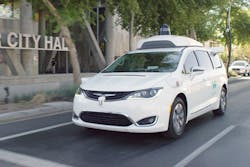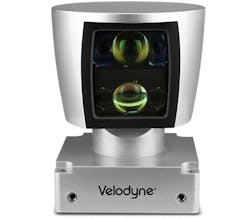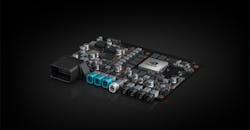Everyone agrees that artificial intelligence (AI) is the key to enabling development of autonomous self-driving cars that meet the requirements of Level 5 (no driver) set by the Society of Automotive Engineers (SAE). But few if any can give an accurate or realistic idea on how much it will cost car makers to do so.
Some argue that it takes only $20,000 to $25,000, and that improvements in AI are “just around the corner.” Others say it’s more than $250,000. Obviously, it’s very doubtful that a consumer would be willing to pay for such a huge car price hike to already high new car prices. Realistically, it may take at least two to three more decades for an affordable self-driving car to appear for the mass market.
AI is making performance progress, but “it is not there yet and it will be solved. Autonomous features will depend on consumer demand, legislation and lawsuits,” says Donald Walker, CEO of Magna, the largest global automotive electronics and contract assembly firm. “AI still may not be able to tell between a ball on the road and he child who kicked it,” he adds.
Given the recent accidents with fully autonomous cars, which were driven under well-controlled conditions, it’s easy to see that such cars don’t yet have the “brain” power to be considered safe and reliable, and be able to reasonably emulate human driver thinking. The accidents include an Uber Technologies crash in Arizona and one involving a Tesla Motors vehicle in California.
Critical to it all is the sensing method and the computer brain chip employed. There are basically three main modes of sensing, vision cameras, radar, and light detection and ranging (LiDAR). Each has its pros and cons, and all three are expected to be used in autonomous cars. They’re used to pinpoint a car’s location, to understand its surroundings, and to predict what objects or events around it will do.
The AI Race
Waymo, a standalone unit of Google’s parent Alphabet, is far ahead in the race toward autonomous cars. It says the forward-looking cameras on its vehicles have sensors and software that are designed to detect pedestrians, cyclists, vehicles, road work, and more from up to three football fields away in all 360 degrees (Fig. 1).
1. Waymo’s Chrysler Pacifica minivan seen self-driving in Arizona. (Source: Waymo)
Waymo’s chief executive John Krafcik says “the planned launch of a ride-hailing program in Arizona this year puts Waymo on a clearer path to monetization.” He insists that self-driving cars are safer than human-driven ones, and that they will cut down on the number of fatal accidents, globally, of 1.25 million people killed each year.
Some approaches use LiDAR, which is in its infancy. While this is quite sensitive and accurate, it’s very costly, difficult to manufacture, and not as robust as other sensing methods in terms of temperature and vibrations. LiDAR fires out millions of laser beams every second, measures how long it takes to bounce back, and uses the data to build a 3D map. One example is Velodyne’s top-of-the-line HDL64E, which provides a 360-deg. field of view (Fig. 2).
2. Velodyne’s LiDAR HDL-64E camera for autonomous vehicles provides a 360-deg. field of view. It’s sensitive and accurate, but the price tag is quite high for cost-effective autonomous vehicle uses. (Source: Velodyne)
Chipping In
The race is on to develop cost-effective AI computing chips using some form of neural-network learning, such as deep-learning neural network (DNN), convolutional-learning neural network (CNN), etc., implemented on a system-on-chip (SoC) design.
“The engineering challenge is to simultaneously integrate all three features of safety, near real-time embedded performance, and supercomputing complexity into one device,” explains Kurt Schuler, vice president of marketing at Arteris. The company licenses its Ncore Cache Coherent Interconnect technology “FlexNoC” to several firms working to develop suitable AI platforms for robotic applications.
“The first samples of our Xavier processor are being delivered to customers this quarter,” said Jensen Huang, CEO of Nvidia, at this year’s Consumer Electronics Show. It features more than 9 billion transistors and works with the company’s Drive software development platform. It’s a key part of the Pegasus AI computing platform (Fig. 3).
3. The Xavier processor for Nvidia’s Drive platform targeted at autonomous cars puts more processing power to work using less energy, delivering 30 trillion operations/s (TOPS) using just 30 W. (Source: Nvidia)
Huang described Pegasus as “the world’s first computer designed for production and deployment of robo-taxis,” and is working with 25 of these robo-taxi firms that will run trial demonstrations next year.
Acquired by Intel last year, Mobileye has developed an autonomous car vision system that it claims is a better solution than Nvidia’s approach. The company says that Nvidia’s hardware approach is insufficient, and with Intel’s software expertise, will advance the development of advanced driver-assistance systems (ADAS) and fully autonomous car development. Intel and Mobileye are joined by the BMW Group and Delphi Automotive in this effort.
Renesas Electronics’ R-Car V3H SoC enables AI processing for autonomous cars. It’s aimed at mass-produced New Car Assessment Program (NCAP) automotive front cameras in SAE level 3 (conditional automation) and level 4 (high automation) autonomous vehicles. The integrated IP for CNNs accelerates deep-learning low-power levels of 0.3 W, achieving more than 2X the performance of DNNs.
Auto maker Tesla is developing its own “specialized hardware that it says is the best in the world,” according to CEO Elon Musk. Jim Keller, the vice president of hardware, says that “producing the chips in-house could allow Tesla to make them much more powerful at a fraction of their current cost.”
Aspiration, Aspiration
Car manufacturers and their partners are still years away from perfecting an acceptable and cost-effective fully autonomous vehicle. They aspire to be the first to do this, but who will come out on top and who will fail remains to be seen.
A more realistic prediction about autonomous cars comes from an independent and thorough study by the Victoria Transport Policy Institute. It assesses their benefits and costs, and takes into consideration many factors like travel demands, planning decisions for parking and public transit, traffic congestion, safety, energy conservation, pollution reduction, governmental regulations, etc. It points out that autonomous vehicles will cost less than current taxi applications, but more for taxi services (Fig. 4).
4. Autonomous vehicles (AVs) will cost more than human-driven vehicles (HDs), but less than current taxis. (Source: Victoria Transport Policy Institute)





